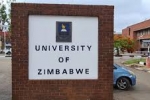By Own Correspondent
THE International Organization for Migration (IOM) says the Matabeleland South Province dominated the list of prospective job seekers migrating to South Africa against a background of significant movement trends.
During the reporting period a total of 54,960 movements were recorded and 3,379 migrants were interviewed across 38 Flow Monitoring Points (FMPs) in Zimbabwe.
The total movements recorded decreased by 12% compared to the previous month. Sixty-two per cent of movements observed were inflows, whilst 38% were outflows. The top three sending districts were Beitbridge (40%), Harare (14%) and Chiredzi (9%), whilst the top three receiving districts were Harare (32%), Beitbridge (14%) and Bulawayo (11%).
“Matabeleland South province recorded the highest number of outflows (45%) whilst Harare province recorded the highest number of inflows (32%).The interviewed migrants leaving the country indicated they were headed towards Gauteng Province,” the migration agency said.
The South Africa-Zimbabwe corridor recorded the highest movement of 42,754 (78%) followed by the Zambia-Zimbabwe corridor which recorded 7,454 (14%) movements.
Fifty-two per cent of movements along the South Africa-Zimbabwe corridor were short-term movements, 24% were long term movements whilst 19% were for family reunification. Of the migrants travelling from South Africa, 23% travelled to Harare, 20% to Beitbridge and 12% were headed to Bulawayo.
The Zambia-Zimbabwe corridor consisted of 55% short-term movements, 22% long-term movements and 22% family reunification movements. Of the migrants travelling from Zambia, 64% were travelling to Harare, 12% to Hurungwe and 9% to Bulawayo.
Migrants travelling from Matabeleland South highlighted Limpopo, South Africa (64%), and Gauteng, South Africa (22%) as their intended destination.
Those travelling to Botswana indicated Central (4%) as their intended destination. Of the incoming migrants travelling to Harare, 46% were travelling from Lusaka (Zambia), 21% from Gauteng (South Africa), and 10% from Eastern Cape (South Africa).








Leave a comment